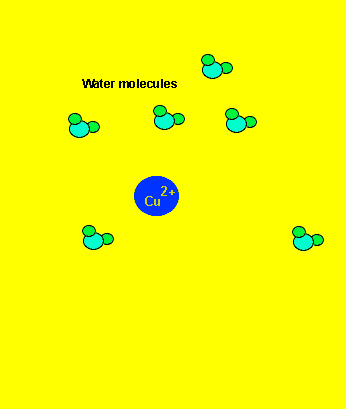Transition metals
Complex ions

Transition metals tend to produce small highly charged positive ions. As a result of this characteristic transition metal ions tend to strongly attract polar molecules and negative ions. In water, metal ions such as Cu2+ and Zn2+ have a definite number of water molecules attracted to each ion. For example the copper ion has 6 water molecules geometrically spaced around it to form the complex ion Cu(H2O)62+, while zinc has 4 water molecules around the ion to form the complex ion Zn(H2O)42+ .
The water molecule attracted to the metal ion is known as a ligand and the combination of metal ion and ligands is known as a complex ion. For example Cu(H2O)62+ has 6 water molecules (ligands) attracted to the ion by ion-dipole bonding.
Ligands can be ions as in the complex ion CoCl42- In this case four chloride ligands are bonded to the metal ion via ion-ion bonding.